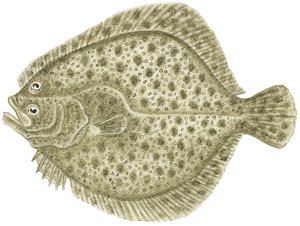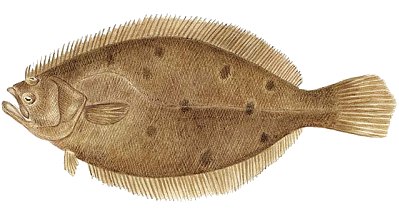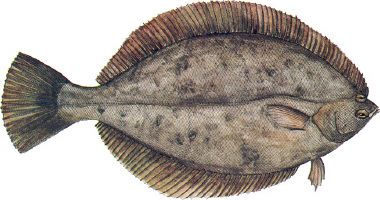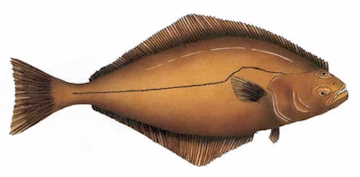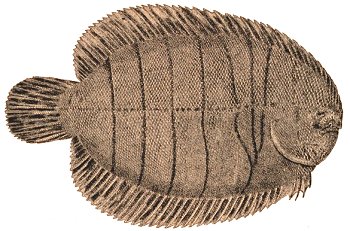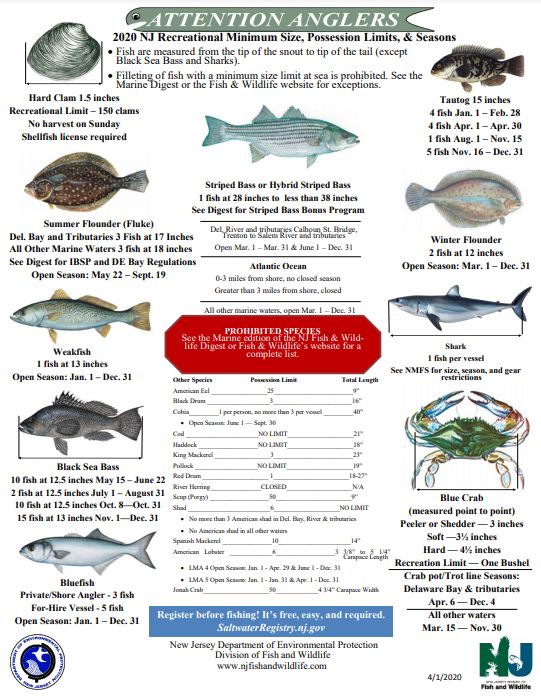Flounders
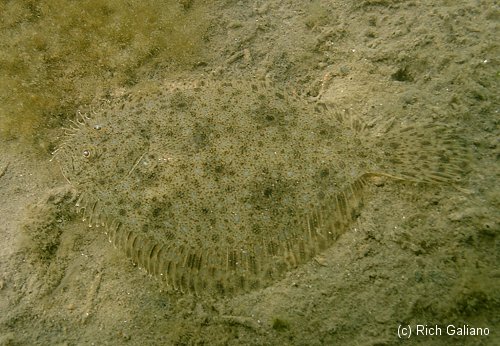
These fish all live and feed on the bottom, out in the open. Often they will hide in the sand with just their eyes visible, and most can change color to match their surroundings.
Flounders fall into three main groups: left-eyed, right-eyed, and soles. All of these are highly compressed and actually lie sideways on one side of their bodies, with both eyes on the other side. Which side the eyes are on is an important distinguishing feature. There are dozens of other species of flounders found in the New Jersey area, this is just a listing of the larger, more common, and more interesting ones.
Flounder Development
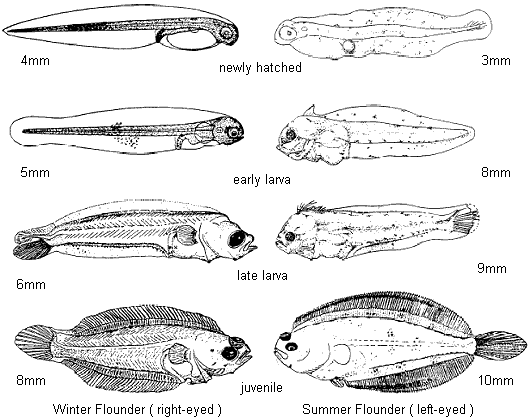
Flounders are born ( or hatched ) with one eye on either side of their head, like any normal fish. However, during the course of early development, one eye migrates over the top of the head to the other side, twisting the skull in the process. As this happens, the fish changes from an upright-swimming planktonic larva to a juvenile that lies on one side when it settles to the bottom. The upper side of the fish retains normal coloration, while the lower side becomes white.
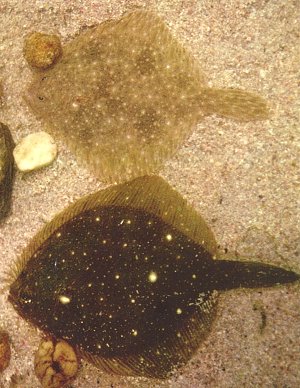
In most species, the eyes always migrate to the same side of the head. In some species, neither side is preferred. Such species are known as ambidextrous, and both left and right individuals occur. Even in non-ambidextrous species, for a small percentage of individuals, things go wrong, and the eyes end up on the wrong side of the head. In Winter Flounders, this results in a fish with a normally colored head, but a white body ( I suppose the underside is brown. ) these unfortunate individuals stand out against the bottom like little white targets, and are quickly picked off by predators before they have a chance to grow. Keep a sharp eye when diving in the rivers early in the season and you may spot some of these inch-long oddities.
Flounder Camouflage
Flounders are true masters of camouflage, able to alter their coloration and even patterning at will. The two aquarium-bound Windowpanes above were taken from light and dark bottoms and placed on contrasting sand. In a short time, they will match their new surroundings as perfectly as the wild specimen at the top of the page.
In addition to this, flounders often also bury themselves, using a fluttering motion to cover themselves with a thin layer of sand, leaving just the eyes exposed. When concealed like this, they are almost impossible to detect, until they explode out from under you as you swim by!

